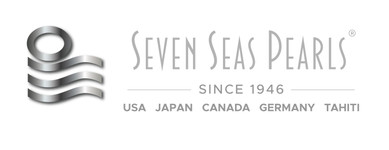Pearls and Their Shapes
23rd Apr 2021
If you have made it this far in our blog, chances are that you are a bit more savvy when it comes to purchasing pearls than the average person. Now, when a sales clerk presents you with a strand of pearls that has poor surface clarity, high luster and the grading of AAA – you now know to run.
Now, we are going to take what you have learned and push you just a bit further. One aspect of the overall pearl grading system is their shape. The shape of the pearl does not factor into their overall grading – but it is very important to be familiar with. Commonly people believe that all pearls are round. This is a common misconception for a very good reason. Akoya Pearls are the most common type of pearl and if you see a woman wearing a beautiful strand of pearls – chances are that they are Akoyas. While Akoya Pearls can come in different shapes, the most common shape is round or near round. This round or near round shape is a result of the way that they are farmed and cultivated. As a result of the popularity of Akoya Pearls, many people assume that round is the only shape pearls come in.
Here we are going to give you a visual illustration of the different shapes of pearls – starting with the most well known: the round and near round shaped pearl. At Seven Seas Pearls, when a pearl is classified as “round” this means that it is literally a perfect round. It is common for this term “round” to be used loosely by many people and sometimes while a pearl may appear round, it won’t be a perfect round. If a pearl is round – but not perfect, it is given the classification of near round.
Here is an excellent illustration of a perfectly round pearl (on the left) and a near round pearl on the right. Can you see the subtle differences?

A pearl shape that you may have seen, but not recognized until now is what is referred to as baroque pearls. These are pearls that are irregular in shape, they are gorgeous free forms and each pearl is unique. Some pearls are classified as “baroque” and some are classified as semi baroque. As you can see from the image below, the one on the left is a baroque pearl and the one on the right is a semi baroque. The semi baroque is still irregular in shape – but not as much as the other baroque pearl.

The last common shape of pearl classification that we are going to review are tear drop pearls. Commonly, these pearls are referred to pear shaped pearls – but this term is not accurate. As you can imagine, tear drop pearls are in the shape of a tear – rounded at one end and pointed and the other. While these types of pearls are irregular in shape – they are not baroque pearls. Below is a great visual illustration of a round pearl, a baroque pearl and a tear drop pearl.

In our next blog we will explore the differences between fresh and saltwater pearls. – We might even teach you how to tell them apart, stay tuned!

